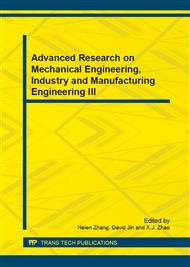p.463
p.469
p.473
p.477
p.482
p.486
p.494
p.498
p.502
Manufacturing Process Design Based on Mental and Physical Workload Analysis
Abstract:
Human factor is an important issue in industrial engineering system. Mental and physical states in the manufacturing process greatly influence workers performance. In this study, EEG data were recorded to analyze mental workload and EMG data to analyze physical workload when a worker was tasks in the production line. Video camera was used to record the manufacturing process simultaneously. We could detect the time periods within which the workers mental workload or physical workload was at a high level. By tracking the operating process through the video, we were able to find the potential problems leading to high workload, and thus optimize the design of manufacturing process or machine in order to decrease mental and physical workload and improve production efficiency.
Info:
Periodical:
Pages:
482-485
Citation:
Online since:
August 2013
Authors:
Price:
Сopyright:
© 2013 Trans Tech Publications Ltd. All Rights Reserved
Share:
Citation:


